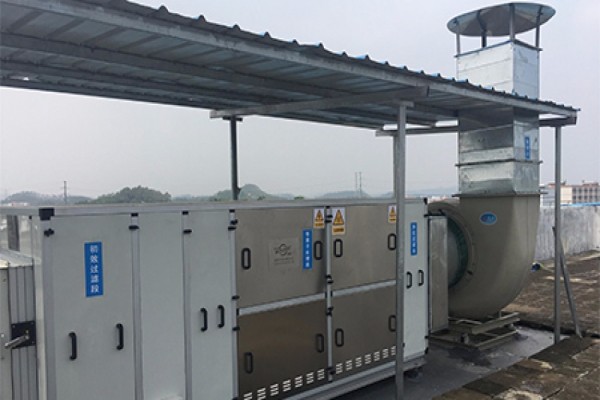How do deodorants work in exhaust gas?
1. Basic Theory of Biological Treatment of VOCs Waste Gas
The mechanism of biological treatment of VOCs waste gas has been extensively studied by previous researchers, and the most popular one is the "absorption biofilm" theory proposed by Dutch scholars: VOCs waste gas is absorbed by water, dispersed on the biofilm under the effect of dissolved concentration gradient, and then degraded and absorbed by touching microorganisms, metabolizing pollutants into simple small molecule substances CO2 and H2O. A new "adsorption biofilm" theory is proposed for the treatment of low concentration VOCs waste gas, which emphasizes that pollutants are directly adsorbed on the surface of biofilms after dispersion, and are degraded and absorbed by microorganisms upon contact. Pollutants, as energy and nutrients, are differentiated by microorganisms and ultimately transformed into simple small molecule substances CO2 and H2O.
2 Biological treatment skills for VOCs waste gas
The biological method for treating oil fume waste gas mainly involves transferring the waste gas from a gaseous state to a liquid film on the surface of a liquid or solid state, and using the metabolic effect of microorganisms to degrade and transform it into inorganic substances (CO2 H2O)、 Organic small molecules and their own cellular components enable the purification of oil fumes and exhaust gases. Compared with traditional physical and chemical waste gas treatment skills, biological purification skills have the characteristics of simple operation, easy protection, low investment and operating costs, good performance, high treatment power, and no secondary pollution, especially in purifying waste gas with low concentration and good biodegradability.

3. Biological filter
The treatment of waste gas in a biofilter involves removing particulate matter from the waste gas through a filter, and then adjusting the humidity and temperature before entering a biofilter filled with adsorbent filter material. When passing through the biofilter layer, waste gas pollutants and oxygen are dispersed from the gas phase to the water film on the outer layer of the carrier. Organic matter is used by microorganisms as a carbon source and energy, and is oxidized and differentiated into simple organic matter H2O and CO2, etc. It can be seen that microbial biomass plays a crucial role in the treatment of VOCs waste gas. Biofilters, after being treated with waste gas deodorants, can effectively treat VOCs waste gas such as monocyclic aromatic hydrocarbons, alcohols, carboxylic acids, aldehydes, ketones, and esters. Biofilters are suitable for the treatment of VOCs waste gas with a mass concentration below 1000mg/m3, and have advantages such as anhydrous phase, simple and easy operation of equipment, large surface area of biofilm fixation ratio, and low secondary pollution. However, a large filter area and an increase in substrate concentration can directly cause rapid microbial growth and blockage of the filter material, affecting its mass transfer efficiency.
Nowadays, biofilters have been widely used in organic waste gas treatment and have achieved certain research results. Screening out degradation bacteria using toluene as a carbon source and designing a biofilter equipment, the results showed that under optimal operating conditions of temperature 30 ℃, relative humidity 80%, and concentration 1500mg/m3, the high degradation rate of toluene could reach 89.7%. Experimental research on the purification of industrial organic gases using a biofilter showed that when the inlet concentration of organic waste gas was less than 25mg/m3, the purification power of the waste gas deodorant was above 97%. When the concentration was greater than 25mg/m3, the purification power increased with the addition of gas flow rate.
The article originates from a deodorant manufacturer http://www.scneng.com.hk
-
06-11
"Environmental Doctor" Du Siyuan: Environmental Protection is a Lifestyle Attitude
There is a Hong Kong compatriot in Jiangmen who often frequents various farms and plantations, walks in mechanical factories, and is seen by others as the nemesis of environmental problems. He conside
-
03-16
Deodorant manufacturer: Deodorants reduce soil pollution
Waste is a chaotic mixture of various components. The accumulation of debris on the surface of soil can cause some chemical reactions, releasing harmful gases, which can lead to soil pollution and eve
-
12-01
Deodorant Manufacturers: Differences between Microbial Deodorants and Traditional Deodorants
The waste that is not needed in our daily life and work is called waste. Due to the large amount of waste discharged and the complex categories, there are great difficulties in reducing waste and deod
-
11-08
Application of Deodorant Manufacturers in Domestic Waste Treatment
Garbage is the waste generated in everyone's daily life and work. Due to its large discharge volume and complex and diverse composition, it poses great difficulties in reducing and deodorizing wa
